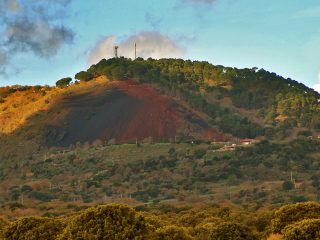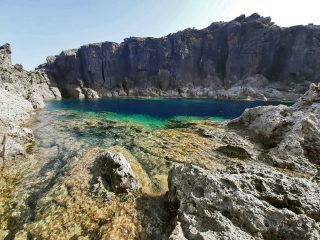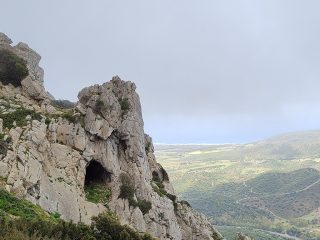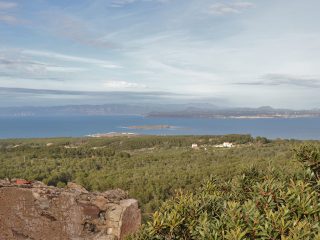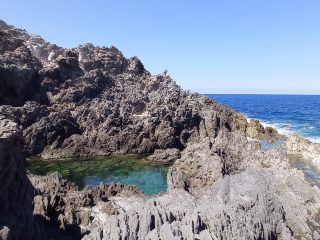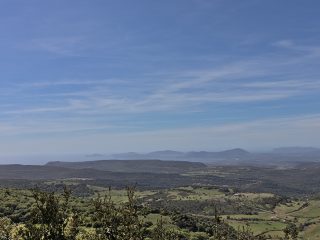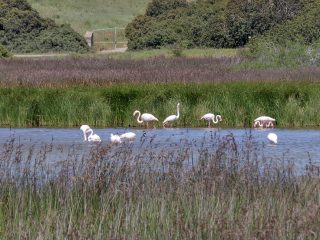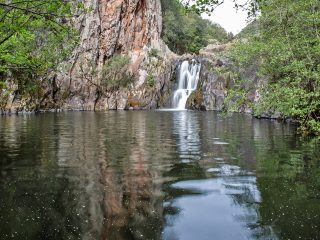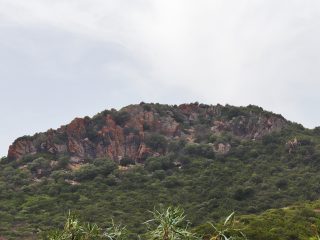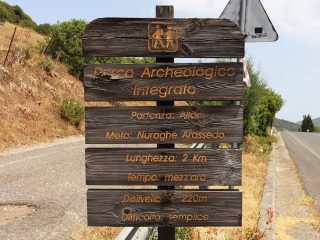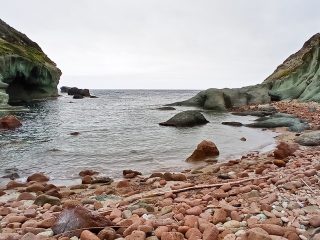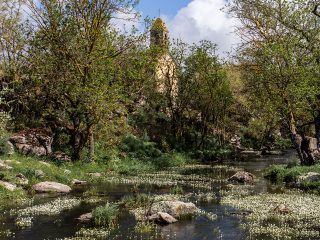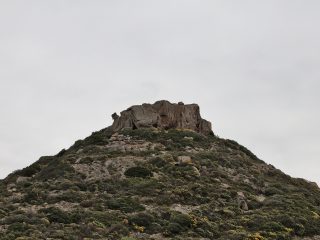Capo Pecora is the start of the stretch of coastline in Sardinia identified as Costa Verde, in the area of Arbus. This site is a natural oasis, far from any built-up or more popular areas.
The cape presents a granite promontory with moderate heights of 8 m a.s.l. The granites are a pinkish colour and blend into the geological context of the hinterland, mainly featuring limestone rocks.
To the south, we find the large beach of Capo Pecora (Sa Piana de Serra). The backshore, unfortunately eroded by the excessive presence of walkways, has grass areas and bushes of Mediterranean shrub and typical coastal essences. These tend to cover the low dunes and flower in springtime.
The beach has pebbles and golden, large-grain sand, in contrast with the crystalline colours of the sea.
To the north, we find some small reefs, exposed to the Mistral winds, which alternate with small pebble coves. The most well-known is the Spiaggia delle Uova (The Egg Beach) (Cala Is Tramatzus), where the pebbles have been smoothed by the sea to make them look like large eggs. On the reef to the north, we can also see “Sa Roca e S’Àchibi”, an unusually shaped granite rock formed by the effects of atmospheric agents.
The entire area is part of the Sito di Interesse Comunitario (SIC) “Capo Pecora” (ITB040030), formerly Zona Speciale di Conservazione (Special Conservation Area) (ZSC), regulated by the Rete Natura 2000.
Its important biodiversity is what gives it its naturalistic value. From a flora point of view, we can find the endemic species, the Palestine Oak, as well as various other typical species found in sandy environments and on cliffs.
From a fauna point of view, the area is also an ideal habitat for birds like the Peregrine falcon and the European shag, as well as being home to a community of Sardinian deer.
It is also well-known for its marine fauna with the presence of sand steenbras, mullet, gilthead bream, octopus, greater amberjack, diplodus, European seabass and sea urchins, of which it is an experimental area.



